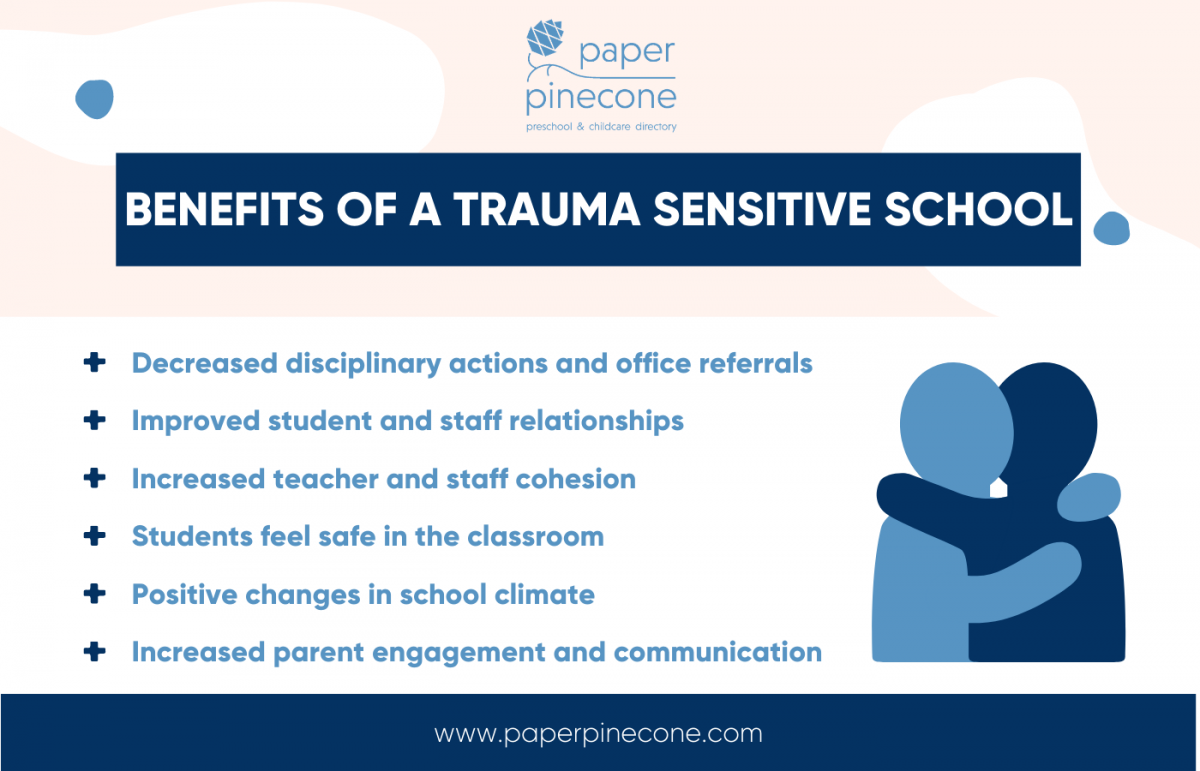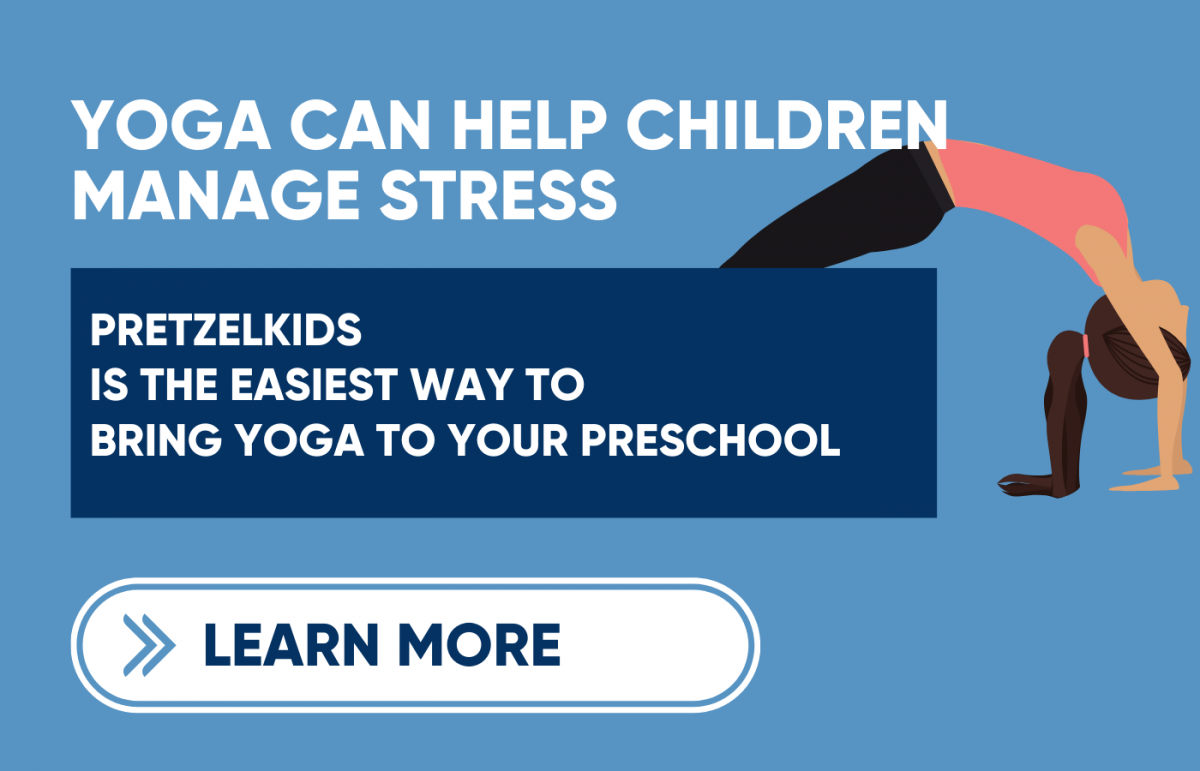Creating a Trauma Sensitive Environment in Your Preschool

Published Date: 06/17/21
How do you build a trauma sensitive classroom?
You serve many children in your preschool every day. Each classroom has specific needs according to the age of the children; however, every room needs to be staffed by educators who are kind, caring, and trained to be aware of the signs of abuse or neglect. If a teacher complains that a four-year-old is “out of control”, throwing things, screaming, or cursing, before they label him as “bad”, consider if the child has experienced a traumatic event in their home.
What are the effects of trauma?
In early childhood, brain development is directly related to their experiences during every waking moment. Children see reactions by adults to their various emotions. Learning to anticipate the response is what leads to self regulation.
In addition, babies and young children are very sensitive to non-verbal cues such as the look on an adult’s face or the way they react to what is going on around them. If a teacher is calm and smiling, the baby will be reassured that they are safe. An impatient teacher or an angry face can be so upsetting that the child will begin to cry, raising the stress level in the caretaker and escalating the emotional tension in the room.
Some preschool students who have had traumatic experiences may withdraw and be unable to pay attention in class. They may disassociate with what the teacher is saying when their stress hormones are triggered by things that remind them, subconsciously, of a prior traumatic experience. Even certain smells and sounds may cause them to shut down. Teachers may call this behavior daydreaming; however, in some cases, it is an indicator of prior trauma.
This behavior over time may lead to children falling behind academically. If the neglect or trauma is addressed and the child can feel secure and safe in the routines and consistent behavior of the teacher, they are more likely to overcome the trauma and reach their learning milestones on time.
How can neglect cause silent trauma in early childhood?
Trauma and PTSD are common, but often misunderstood, problems in early childhood. Signs of physical or sexual abuse can be recognized more easily than the invisible traumatic experiences, including neglect, that impact the quickly developing brains of young children. A comparative research study on the relationship between neglected preschoolers and mother-child communication reads, “Child neglect is viewed as a major life stressor and a potentially traumatic situation that may strongly impair child development and functioning.”
Neglect can be difficult to identify. In very young children, it may be as subtle as a parent who allows their child to watch tv all day regularly. When children need to be helped and are ignored, their brains do not develop the same attachment instinct with the primary caretaker as those who learn that their needs will be met when they cry or ask for it.
As preschool teachers often spend more waking hours with students than their caregivers do, it is critical that children learn that teachers hear them, will help them, and care about their needs. Training your teachers to communicate with children in a trauma sensitive environment can greatly reduce the amount of disruption in their classrooms and increase the likelihood of children being able to successfully learn and develop.
Why are trauma sensitive schools important?
Research shows the need for trauma sensitive schools. "Studies have shown that complex trauma greatly affects behavior, academic performance, and drop-out rates in schools (Wolpow et al., 2009). Simply stated, children experiencing complex trauma are unable to achieve their utmost academic potential. As research has demonstrated, the majority of the population is likely to have experienced ACEs; therefore, it is sensible to make trauma-sensitive practices the norm, not the exception. Democratizing trauma-informed care in schools (making it available to all) will provide children with trauma a more adequate level of support to access educational opportunities."
Trauma sensitive schools don't just help students who have experienced childhood trauma, they help all students. The focus is on learning about and understanding the whole student to create a supportive environment where children can feel safe. Students learn skills to cope with trauma and ultimately, that has a lasting positive impact on children's academic performance, social and emotional development, relationships, and behavior.
What are the benefits of a trauma sensitive school?
Trauma sensitive schools have seen positive effects on students in the classroom. In Massachusetts, five schools implemented the Inquiry Based Processes to create trauma sensitive schools and a two-year research study was completed. Significant outcomes of the research study were:
- decreased disciplinary actions and office referrals
- improved student and staff relationships
- increased teacher and staff cohesion
- students feel safe in the classroom
- positive changes in school climate
- increased parent engagement and communication.

What does a trauma sensitive school look like?
Trauma sensitive schools will create a safe environment where educators use trauma informed approaches to support the social and emotional development of children, foster meaningful relationships and address and prevent behavior issues that may stem from the effects of trauma.
Trauma sensitive schools will include the following:
- Teachers and support staff will be trained on trauma and on how to report trauma
- A team of trauma informed leaders within the school
- A safe place for where students can go when they feel they need support
- Mindfulness activities throughout the day that help children practice self regulation
- Students should be able to use these in the classroom and it should be integrated into the school culture
- Teachers and staff will use trauma informed language like, "I hear you," "I believe you", and "I support you."
- A trauma informed approach to addressing events that affect the community
- Community support and guidance from trauma experts
How do you create a trauma sensitive classroom?
A preschool should not be a silent place, but the voices you hear in the classrooms should be positive and happy. If a teacher is dealing with a violent, out of control child or one that is unable to self-soothe their emotional sadness or fear, consider what support you can provide to help both the teacher and the child feel successful and calm. Teachers who are trained on trauma informed communication and recognize the cause of “bad” behaviors feel like they are better teachers and are more self-aware of their own behavior around children.
Talk About What Happened Instead of About What is Wrong
A teacher may have twenty students in their room; however, each child brings with him/her the influences (both traumatic and nurturing) of all the significant events in their lives when they come in the door.
A child that witnessed parents fighting before breakfast or heard gunshots on the street may come to school with mental trauma that they do not know how to process. Natural disasters, such as wildfires in California or hurricanes along the gulf coast cause stress for families, including the children who lose their belongings or are worried about where they will sleep.
Teachers need to be sensitive to children’s feelings and emotions and give them opportunities to express their fears and tell their stories through drawing, play, and in conversations with children who are old enough to talk. A child who does not have the words to tell you what is wrong with them may either cry or scream.
“Trauma-informed” approaches are not new – they have been implemented in many fields including the medical profession and our judicial system. The lessons learned from these evidence-based approaches can be directly applied to classrooms and schools. At the heart of these approaches is the belief that students’ actions are a direct result of their experiences, and when students act out or disengage, the question we should ask is not “what’s wrong with you,” but rather “what happened to you?
Teach self regulation
Teaching educators calming techniques to help traumatized children learn how to control their emotions effectively can help create a supportive classroom environment. Asking to hold a child’s hand while they talk, teaching breathing techniques, and words to use that express how they feel rather than crying or yelling can make a real difference in how children regain control of their emotions.
When children feel safe, listened to, and understood, it can greatly impact their development. They develop self-confidence and seek relationships with people who support them and can help them find solution when life presents events they may not know how to handle.
Teaching children the skills and giving them the strategies, resilience, and resources to overcome challenges doesn't just set them up for success in school - it has a positive effect on their emotional development, will impact their overall wellbeing, and can contribute to a healthy life.
Train teachers on the effects of trauma and trauma informed care
If you are a early childhood education director, it is your responsibility to be establish a school with teachers who are trained on a trauma informed response. Fortunately, there are several resources available to help you work with teachers and aides to notice neglect as effectively as they do abuse.
Always be aware of the laws that require teachers to report abuse or neglect to the authorities. Teachers need to know that failure to report can result in the preschool being fined or employees losing their jobs.
The Education Law Center outlines steps for public schools to implement to become a trauma informed campus may be adapted to early childhood education.
Some highlights that apply to preschools include:
- Strengthen the relationships between staff, children who have experienced trauma, and their caregivers.
- Help traumatized children regulate their emotions to ensure academic and social success.
- Maintain predictable routines and expectations that are consistent between rooms and between teachers.
- Teach children the words they need to express feelings, fears, and emotions instead of acting with violence or crying.
- Model respectful, non-violent interactions
Additional resources to help train educators on trauma sensitive approaches
- National Child Traumatic Stress Network (NCTSN): www.nctsn.org
- Child Trauma Academy (CTA): www.childtrauma.org
- Trauma Center at Justice Resource Institute: www.traumacenter.org
- National Institute for Trauma and Loss in Children (TLC): www.starr.org/training/tlc
- Reporting child abuse and neglect: www.childwelfare.gov/topics/responding/reporting/how
Building trauma sensitive schools and early childhood education environments will help provide students with the support and strategies they need to lead healthy lives. Understanding the effect of trauma on the brain, how it impacts student behaviors, and how social emotional development is affected by trauma can contribute to creating a supportive school where kids feel safe. Teach kids the skills they need to overcome negative experiences and establish positive relationships with adults and their peers.
By Crystal Teegarden
 Crystal is a gentle parenting mama who loves reading, cooking, and exploring new trails with her husband and son. She is from Los Angeles but currently lives in Portland, OR where she is eating all the vegan food.
Crystal is a gentle parenting mama who loves reading, cooking, and exploring new trails with her husband and son. She is from Los Angeles but currently lives in Portland, OR where she is eating all the vegan food.
Paper Pinecone is the #1 most trusted childcare directory. Childcare providers list free so parents can find the best daycare and preschools in their area.
- stacey's blog
- Log in or register to post comments

